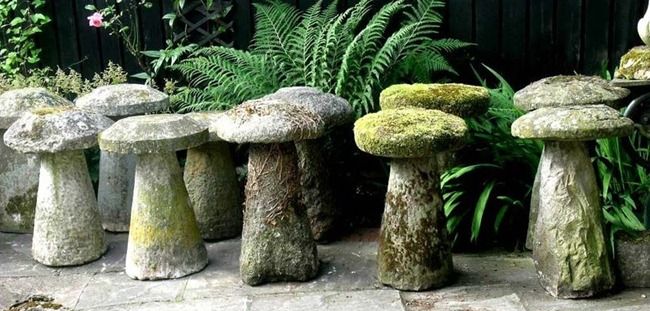El Barto":1wyzcdov said:
Ahh sorry guys, I should have been more specific, completely forgot about traditional staddle stones! I was actually thinking more along like the lines of this shape:
Easy! Make a ply box with all the screws facing out(!), coat the inside with oil, slap the concrete in and give it a really good thump all round to get the air out. A vibrating sander can help with that. Use white cement and coloured dye powders for posh effects. Use silicon on all the inside corner edges to give you a beveled look. White melamine chipboard releases well, but use oil as well. Ply will last longer if you want one mold to do many blocks. You could use some steel mesh inside if you wanted to, but I think it would probably be strong enough without. I would give each one a day to cure, then dismantle to mold to release, and cure the freshly made block in a bucket of water for two weeks. A garden pond will also work (your fish may object to pH changes).
You can also make a little bass-relief motif by putting the design on the inside edges - I used strips of ply to make a Greek key / meander but this makes getting the mold off afterwards more tricky.
Regarding the oil, I mostly used olive oil, but used standard engine oil or chip pan oil will work, as will fresh cooking oil of any variety, and theoretically used engine oil, but I wouldn't do that, personally. Nasty mess.
Edit: I forgot to mention that your design calls for compound mitre :shock: :shock: :shock: joints. Nothing to worry about.

































